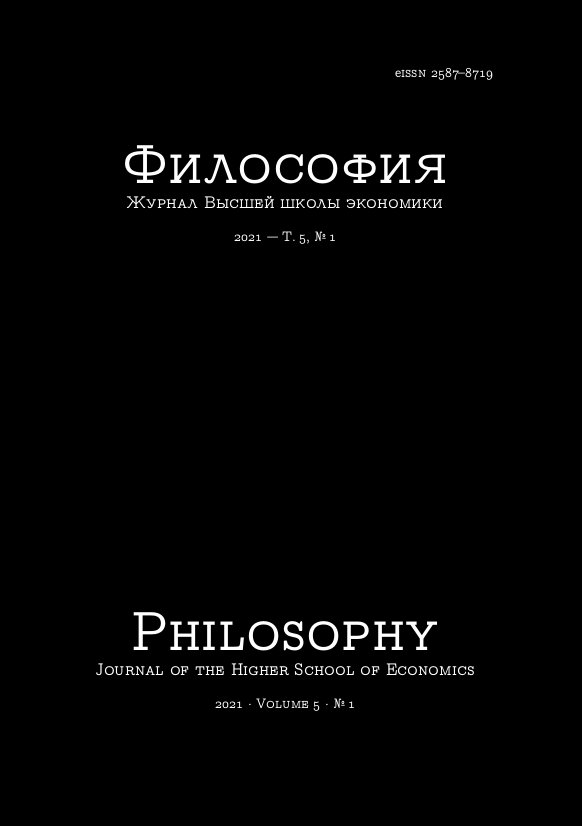Thematization of Lecture Courses
V. Bibikhin's Strategies of Thought
Abstract
This article is devoted to the main methods of thought that Vladimir Bibikhin uses to form the subject field of his lecture courses. The focus is on four such techniques: the combination of the meanings of everyday language (Aristotelian approach), the clash of extreme positions (dialectics without synthesis), the hermeneutic circle, as well as the boundaries of text collection (Bibikhin's moments of silence). At the very beginning of the article, the author analyzes the most “traditional” lecture courses of Vladimir Bibikhin (such as “Philosophy of Law” and “History of Modern Philosophy”), demonstrating their non-standard composition and thematization. The techniques revealed are the result of the practice of “slow reading” of Bibikhin's lectures. There are four main methods: combining the meanings of everyday language (1), the collision of extreme positions (2), the circular, hermeneutic structure of the lecture (3), the composition of the main blocks of thought in abrupt transitions, in silence (4). Bibikhin seeks to suspend the viewer's desire to “define”, to recognize the familiar in the unfamiliar. At the same time, Bibikhin carefully leads his reader and listener between, on the one hand, the businesslike vanity of thinking and, on the other hand, complete indifference and disinterest. As the main principle for avoiding these extremes, Heidegger's “a priori perfect” is put forward, according to which everything “always has already happened”, and therefore the thought is forced to deal with being late to the event of the world.
Downloads
Copyright (c) 2021 Philosophy. Journal of the Higher School of Economics

This work is licensed under a Creative Commons Attribution-NonCommercial 4.0 International License.






